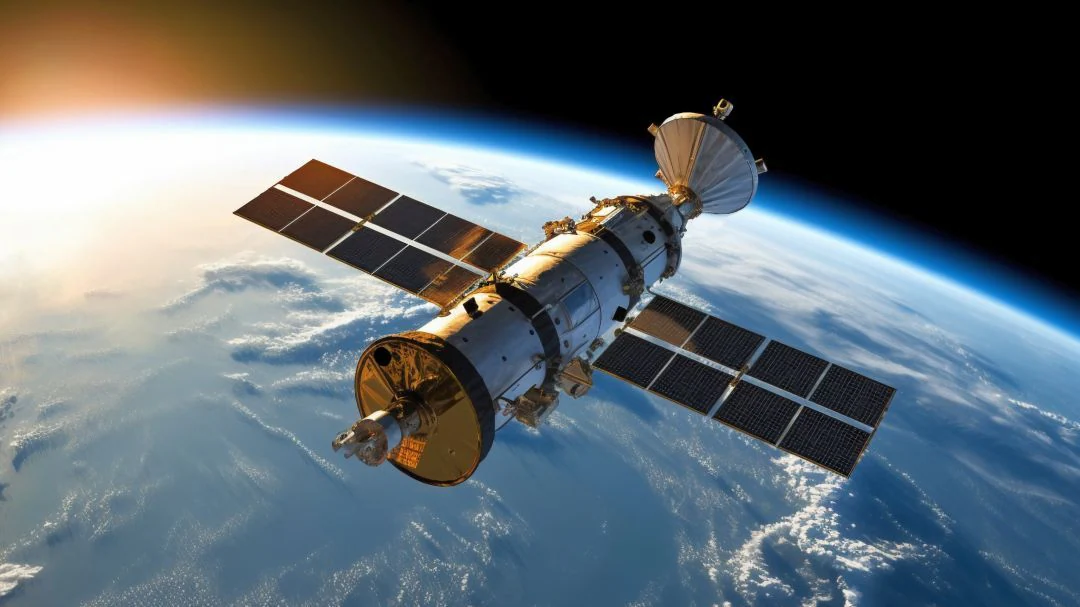- Courses
- GS Full Course 1 Year
- GS Full Course 2 Year
- GS Full Course 3 Year
- GS Full Course Till Selection
- CSAT
- 5 LAYERED ARJUNA Mentorship
- Public Administration Optional
- Online Program
- GS Recorded Course
- NCERT (Recorded 500+ Hours)
- Polity Recorded Course
- Geography Recorded Course
- Economy Recorded Course
- AMAC Recorded Course
- Modern India, Post Independence & World History
- Environment Recoded Course
- Governance Recoded Course
- Science & Tech. Recoded Course
- International Relations and Internal Security Recorded Course
- Disaster Management Module Course
- Ethics Recoded Course
- Essay Recoded Course
- Current Affairs Recoded Course
- ABOUT US
- OUR TOPPERS
- TEST SERIES
- FREE STUDY MATERIAL
- VIDEOS
- CONTACT US
India to Launch 52 Military Satellites, Unveils New Military Space Doctrine
India to Launch 52 Military Satellites, Unveils New Military Space Doctrine

India is significantly boosting its defense capabilities by turning its focus toward space. According to the Chief of Defence Staff (CDS), the country plans to launch 52 dedicated military satellites aimed at Intelligence, Surveillance, and Reconnaissance (ISR).
Purpose and Strategic Importance
These satellites will act as force multipliers by enhancing:
- Real-time surveillance
- Early warning systems
- Precision targeting capabilities
Space-based ISR will significantly improve India’s situational awareness and readiness, particularly in sensitive regions and potential conflict zones.
Previous Military Satellites: A Foundation Already in Place
India has already laid the groundwork with several key satellite missions:
- GSAT-7 “Rukmini”: Provides real-time communication support to the Navy.
- GSAT-7A “Angry Bird”: Enhances the IAF's network-centric warfare capabilities.
- RISAT Series: Radar Imaging Satellites with synthetic aperture radar (SAR) capabilities for all-weather, day-night surveillance.
These systems have already proven useful, and the upcoming 52 satellites will expand coverage, resilience, and precision across domains.
Why Military Satellites Are Essential
- Monitoring Borders with Pakistan and China
High-resolution imaging and radar tech will help monitor difficult, mountainous terrain more effectively. - Maritime Surveillance
Crucial for tracking naval movements and securing the Indian Ocean Region (IOR)—a zone of increasing strategic competition. - Defending Against Advanced Threats
Satellites equipped with cutting-edge sensors can detect and counter threats from:- Hypersonic missiles
- Unmanned Aerial Vehicles (UAVs)
- All-Weather, 24/7 Monitoring
Synthetic Aperture Radar (SAR) allows surveillance even through clouds, darkness, and foliage—extending operational capacity in all conditions.
Development and Deployment Details
- The satellites will be developed by ISRO in collaboration with private sector partners, encouraging greater self-reliance and innovation.
- They will feature:
- Synthetic Aperture Radar (SAR)
- Advanced optical sensors
- High-resolution imaging systems
- Deployment will be spread across various orbits for layered coverage and redundancy:
- Low Earth Orbit (LEO)
- Medium Earth Orbit (MEO)
- Potentially Geostationary Orbit (GEO)
This multi-orbit strategy ensures that India can observe and respond to threats from multiple vantage points simultaneously.
India’s New Military Space Doctrine
Alongside the satellite expansion, India will introduce a comprehensive Military Space Doctrine. This policy document will:
- Guide the Armed Forces in using space assets for intelligence and threat monitoring beyond national borders.
- Address emerging challenges such as:
- Anti-satellite (ASAT) weapons
- Space debris hazards
- Electronic warfare in orbit
This doctrine marks a strategic shift in recognizing space as a contested and vital warfighting domain.
- Notably, in 2019, India demonstrated its ASAT capability by destroying a satellite in Low Earth Orbit, becoming the fourth nation (after the US, Russia, and China) with such a capability—reinforcing its strategic intent to safeguard space assets.
|
Also Read |
|
| FREE NIOS Books | |




